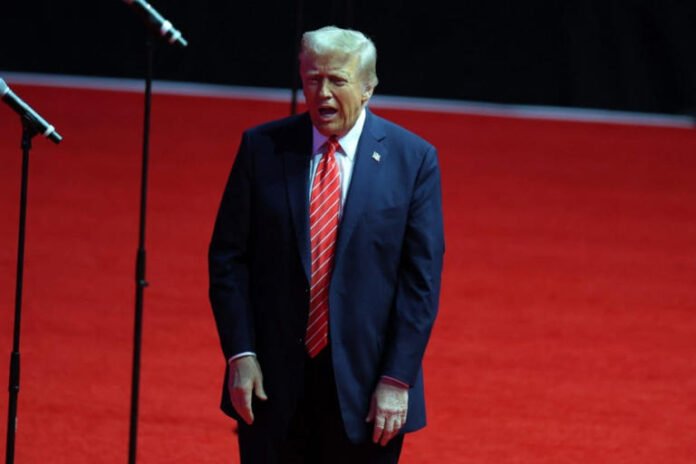Former President Donald Trump has announced plans to introduce new tariffs on imported semiconductors “over the next week,” signaling a return to the protectionist economic policies that characterized his first term in office. The decision, if implemented, could have major implications for global supply chains, the tech industry, and the broader U.S. economy.
Speaking at a campaign rally over the weekend, Trump emphasized the need to restore American dominance in critical manufacturing sectors, particularly in high-tech industries. He pointed to the nation’s reliance on foreign-produced semiconductors as a key vulnerability, both economically and from a national security standpoint.
“We’re going to bring semiconductor manufacturing back to the United States,” Trump declared. “We can’t keep depending on countries like China and others for the chips that power everything from our phones to our fighter jets.”
The forthcoming tariffs are expected to target chips manufactured in Asia—particularly those from Taiwan, South Korea, Japan, and China—which currently dominate global semiconductor production. While specific rates have not yet been officially disclosed, sources close to Trump’s policy advisors suggest an initial tariff of 25% on imported semiconductors, with the possibility of increases in the future.
This move is aligned with Trump’s broader “America First” economic platform, which seeks to reduce the United States’ dependence on foreign goods and revitalize domestic industry. In his first term, Trump used similar tariffs as leverage in trade negotiations with countries like China, and his administration argued that such policies helped bring manufacturing jobs back to American soil.
Semiconductors are a foundational element of modern technology, embedded in everything from smartphones and laptops to automobiles and medical equipment. However, the vast majority of these chips are produced outside the United States, making American companies vulnerable to global supply chain disruptions.
Supporters of the policy argue that a robust domestic semiconductor industry is essential not just for economic competitiveness, but also for national security. They cite recent shortages and geopolitical tensions—especially surrounding Taiwan, a major chip producer—as evidence that the U.S. must secure its own manufacturing base in this sector.
Critics, however, warn that imposing tariffs could backfire in the short term. Many U.S. tech companies rely on affordable and high-quality chips from overseas to power their products. Higher tariffs may increase production costs, leading to more expensive consumer goods and putting pressure on manufacturers. Additionally, constructing new semiconductor fabrication plants in the United States is a capital-intensive and time-consuming process, often requiring years before any meaningful output is achieved.
Economists are divided on the potential outcomes. Some believe the tariffs could serve as a catalyst for long-term industrial investment and innovation, particularly if paired with federal subsidies or tax incentives for domestic chipmakers. Others caution that the tariffs might spark retaliation from trading partners or lead to inefficiencies in the tech supply chain.
International reactions have so far been muted but are expected to intensify once formal tariff announcements are made. Several of the nations likely to be affected are key allies of the United States, and their response could influence future trade relationships and geopolitical dynamics. Moreover, multinational semiconductor manufacturers—many of which have operations in multiple countries—may seek ways to restructure their supply chains to avoid tariff costs, adding complexity to an already fragile global system.
The announcement also adds another dimension to the upcoming presidential election. As Trump seeks to return to the White House, his stance on economic nationalism and trade will likely be central to his campaign narrative. His supporters applaud the move as a necessary step to restore American strength, while opponents question the efficacy and long-term consequences of such protectionist policies.
Whether these tariffs ultimately achieve their intended goals remains to be seen. What is clear, however, is that the debate over America’s role in global trade—and its strategy for securing critical technologies—will be a defining issue in the months ahead.

